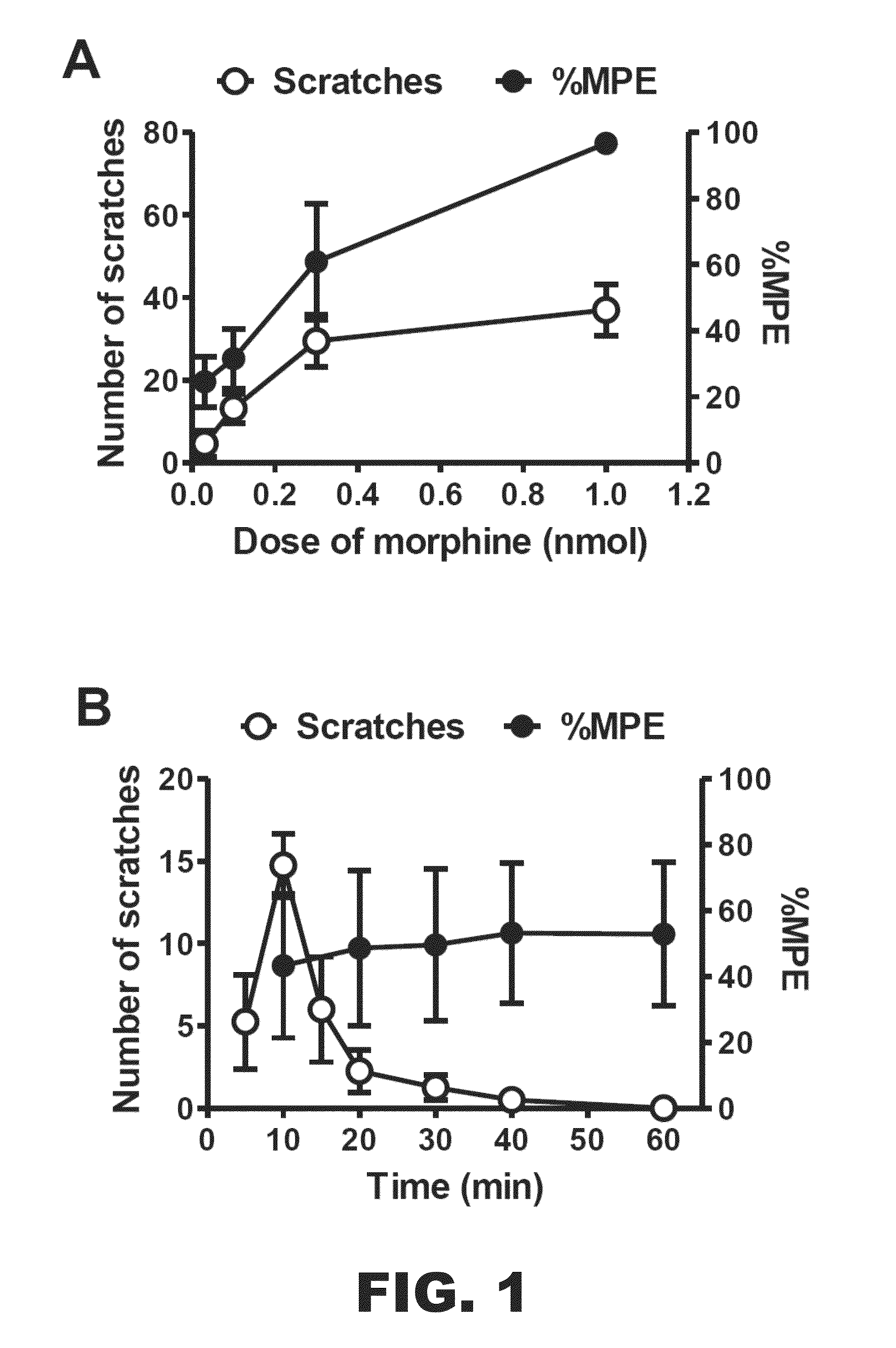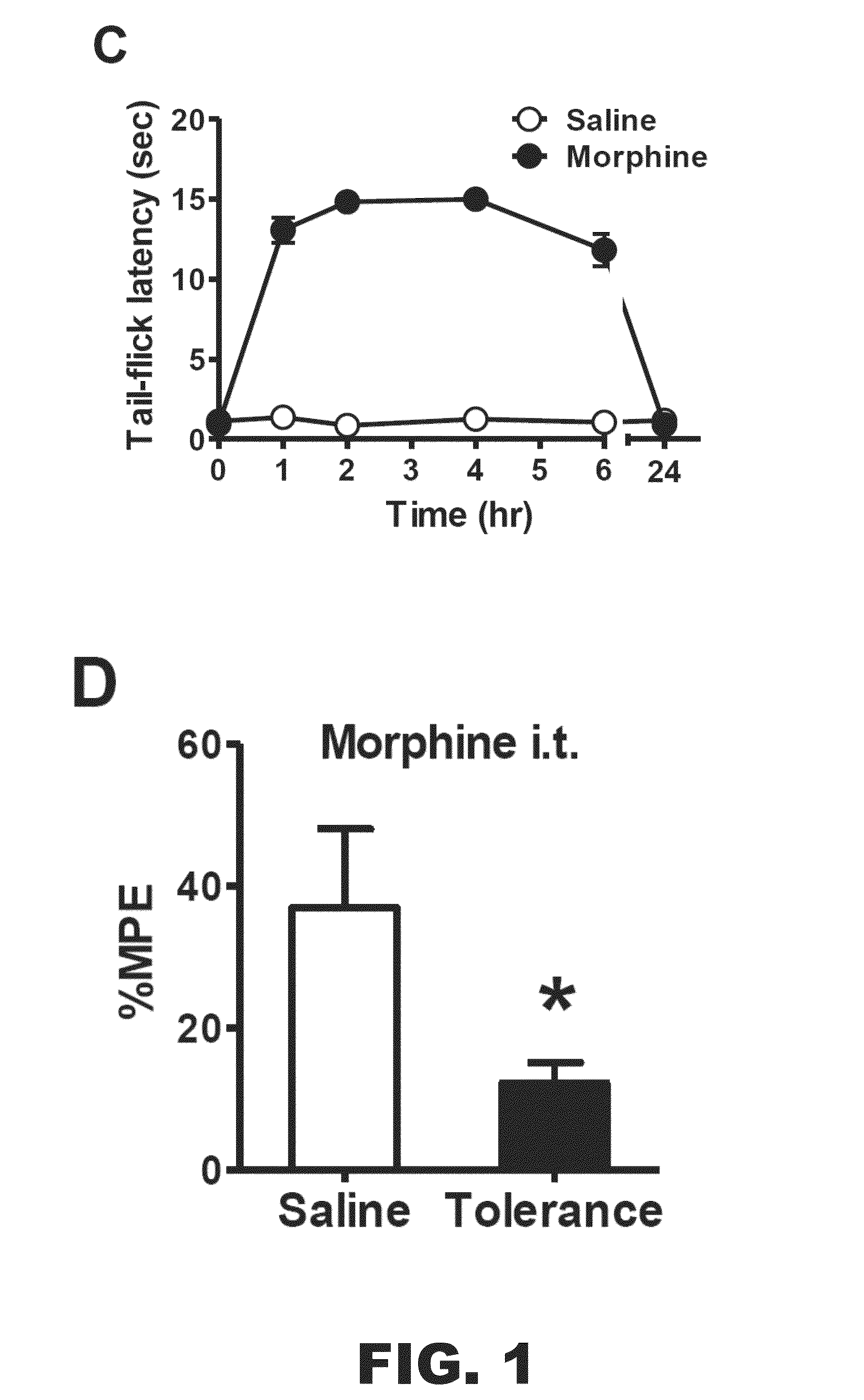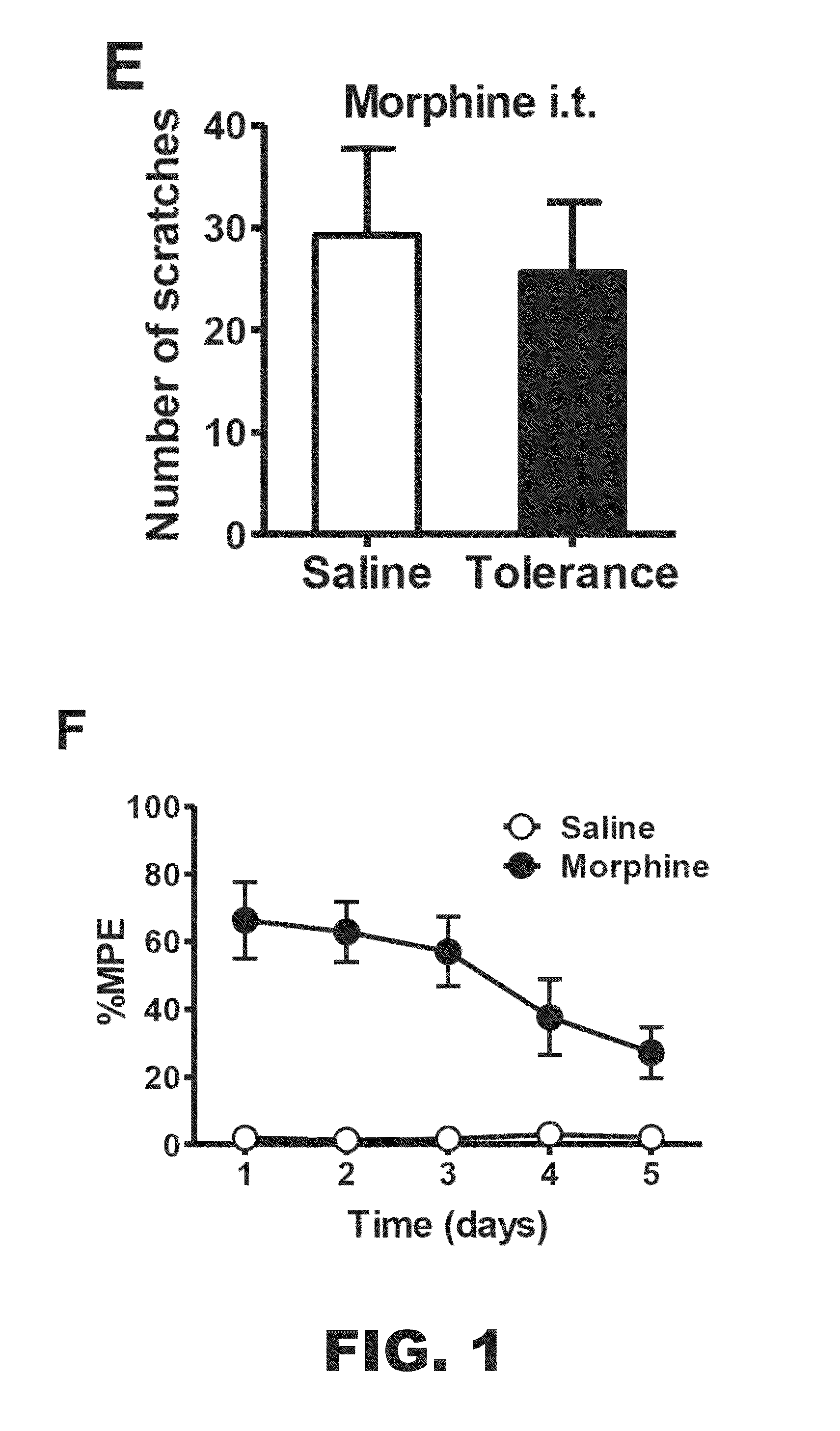Composition and methods for reducing opioid-induced pruritis
a technology of pruritis and composition, applied in the direction of gastrins/cholecystokinins, drug compositions, peptide/protein ingredients, etc., can solve the problem of hampered the full use of opioids as analgesics, and achieve the effect of inhibiting the interaction
- Summary
- Abstract
- Description
- Claims
- Application Information
AI Technical Summary
Benefits of technology
Problems solved by technology
Method used
Image
Examples
examples
[0075]The following examples illustrate various iterations of the invention.
examples 1-9
Introduction to
[0076]Itch and pain are two fundamental sensory perceptions evoked by distinct external inputs. They are encoded and transmitted by primary nociceptive fibers and varying subpopulations of dorsal horn neurons (Davidson and Giesler, 2010; Patel and Dong, 2010). The ability to discriminate between itch and pain allows animals to employ the proper motor response (scratching vs. withdrawal) so that potentially damaging stimuli from the environment can be avoided. Intriguingly, it has been well documented that itch and pain may counteract each other under some conditions. Indeed, a wide range of noxious stimuli including thermal, mechanical, chemical and electrical stimuli are able to inhibit itch (Ikoma et al., 2006). Conversely, it is widely assumed that itch may be unmasked by pain reduction, and one of the most cited examples of this antagonistic relationship is opioid-induced itch, or pruritus (Davidson and Giesler, 2010; Ikoma et al., 2006; Paus et al., 2006). In fac...
example 1
Morphine-Induced Scratching (MIS) Occurs Independent of Morphine-Induced Analgesia (MIA)
[0078]To examine whether MIS and MIA are correlated to each other, the dose-response curve and time course of MIS and MIA were studied after intrathecal (i.t.) injection of morphine. As shown in FIG. 1A, both MIA and MIS increased in a dose-dependent manner. However, when the morphine dose increased from 0.3 nmol to 1.0 nmol, MIA effect was enhanced by 81%, while MIS only had a slight increase. In addition, time course analysis at 0.3 nmol of morphine revealed obvious segregation of MIA and MIS (FIG. 1B). After i.t. morphine MIS increased dramatically within 10 min and quickly decreased. No scratches were seen after 40 min. In contrast, MIA maintained at a maximal level for at least one hr. To further examine whether opioid-induced itch is due to pain inhibition, a morphine tolerance paradigm was employed in which the degree of tolerance to morphine is measured by the latency of tail-flick (anal...
PUM
| Property | Measurement | Unit |
|---|---|---|
| Interaction | aaaaa | aaaaa |
Abstract
Description
Claims
Application Information
 Login to View More
Login to View More - R&D
- Intellectual Property
- Life Sciences
- Materials
- Tech Scout
- Unparalleled Data Quality
- Higher Quality Content
- 60% Fewer Hallucinations
Browse by: Latest US Patents, China's latest patents, Technical Efficacy Thesaurus, Application Domain, Technology Topic, Popular Technical Reports.
© 2025 PatSnap. All rights reserved.Legal|Privacy policy|Modern Slavery Act Transparency Statement|Sitemap|About US| Contact US: help@patsnap.com



